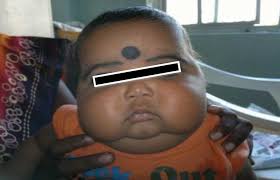OSTEOPOROSIS: THE OLD LADY’S TROUBLE AND THE YOUNG MAN’S FEAR


Old people would generally wonder why their bones begin to fail and flutter as they grow old. Being the indisputable wise ones, they would guess at a natural phenomenon of ageing. But is it just ageing, or there is more to the gradual degeneration of bones than the addition of age and grey? The human skeleton is notably the strongest and most rigid part of the entire body. So what causes this greatly compact structure to begin to lose form at comparably early stages of adulthood?
Interestingly, research shows that women are at a greater risk of developing this dangerous disease, and Asian women are even much more at an even greater risk. Symptoms like stooping backs and slightly detectable hip fractures are noticed.
What brings about the condition and how can it be avoided?
Osteoporosis is a medical condition in which bones become weak, brittle and susceptible to fracture. It is known to occur in older adults and very rarely in young people. According to a World Health Organization report on the subject, it was discovered to have caused more than 8.9 million fractures worldwide. It poses greater risks to post-menopausal women and sets off serious complications in elderly people. The disease is hardly ever recorded in young adults below the age of fifty (50). However, as ageing sets in, it becomes almost impossible to maintain strong bone growth.
Osteoporosis occurs when the bone cell replacement process occurring in the body doesn’t match the bone cell death. It could also be because the calcium available in the body’s reservoir is insufficient to satisfy healthy bone growth. When the rate of cell replacement doesn’t sufficiently exceed the rate of cell death, bony mass gradually reduces, leading to thin bones and bone with holes. These bones, as a result, end up frail, and can easily splinter.
OSTEOPOROSIS OF THE SPINE, WRISTS AND HIPS
hips break, spines stoop, and wrists shake
The most commonly affected regions of the skeleton caused by this age-factored disease are mostly the bones of the spine, wrist and hips. They are noted for getting visibly translucent with age, especially the ala of the ilium, under the inspection of clinical X-rays and imaging.
In the spine, the setback in the supply of the bone’s crucial need for calcium results in the development of holes in the mass of the bone. In extreme cases, it causes repression of height, as the degenerated and worn-off cervical vertebra begins to relapse on its original attachments.
PREVENTING OSTEOPOROSIS; FINDING A SUITABLE DEFENSE
With all the claims of osteoporosis being an age-induced occurrence, the average man would be disposed to think that it would be impossible to avoid osteoporosis. However, this is not the case.
The body only stops topping up its bone mass at the age of thirty (30). Before this age, the body is known to increasingly produce bone cells faster than it breaks them down, and as the body grows older and peaks at the age of 30, it gradually stops this growth, having achieved the highest bone growth possible.
Following the age of thirty (30), the body continues to replace its bone cells just nearly as much as the breakdown rate. This rate of replacement depends largely on the amount of calcium, Vitamin D and essential nutrients present in the body’s store.
Rather auxiliary than solely, hormone levels, a sedentary life, medical conditions, and tobacco use are known for also increasing the risk of weakened and frail bones.
All of this knowledge points to the deduction that in order to avoid osteoporosis and its complications, it would be important to:
- Follow a healthy diet during early adulthood.
- Keep up with a diet rich in Vitamin D and Calcium to ensure a good supply of healthy bone cells.
- Avoid excessive alcohol, tobacco and over-use of thyroid medication.
- Exercise regularly; practice bone-strengthening exertions.
- Keep an eye out for medical conditions like liver diseases, cancer and myeloma.
- Avoid being underweight and take food rich in energy.
- Consult with your doctor about your racial history.
A THRIVING SKELETON
All of this being said, it is crucial to maintain frequent visits to the doctor, the fitness instructor, the dietician and the park. Healthy and active lifestyles are highly encouraged to ensure that bones develop right and they strengthen adequately. Conscious avoidance of strenuous activities would also greatly increase the risk of bone splintering. Having a healthy, strong skeleton is within easy grasp with unshaken obedience to these measures.
Toluwalope Ishola


